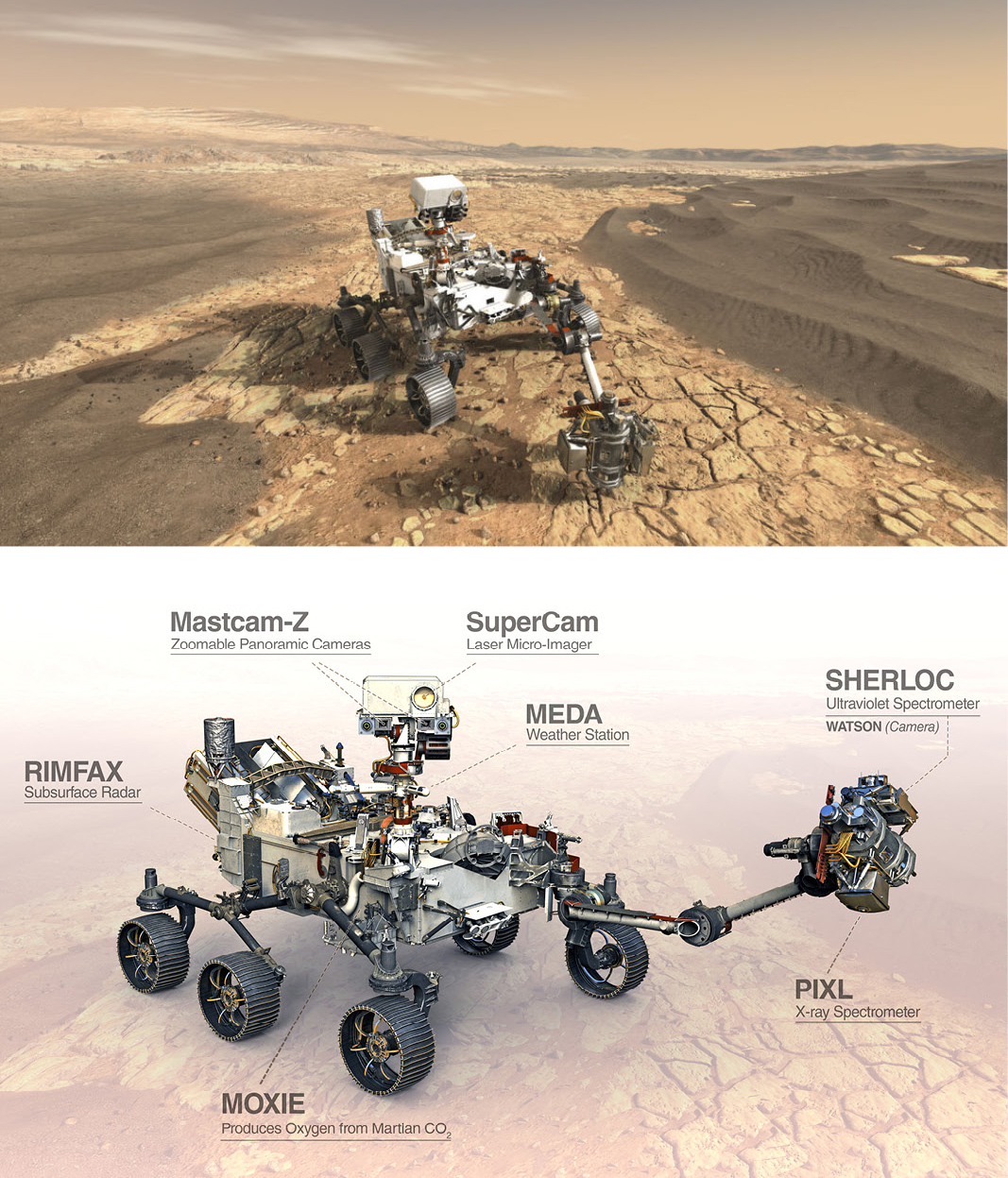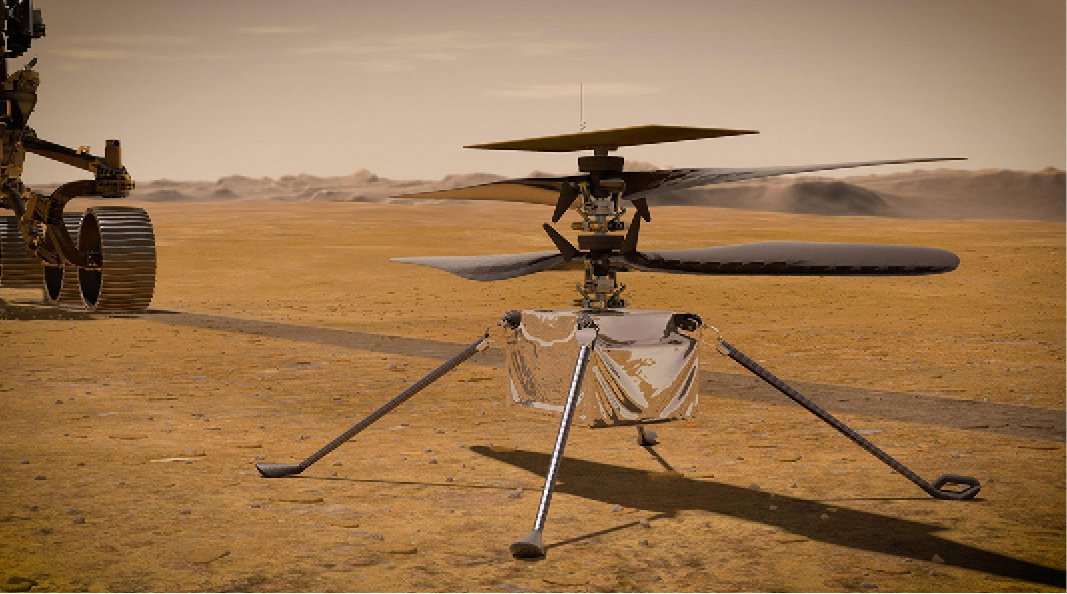Perseverance

July 30, 2020…Lift-off for Mars!!! Touchdown on Mars February 18, 2021!!!! People were watching from homes, offices and coffee shops across the country and around the world. The discoveries yet to be found will be used as a springboard by the next generation of space travelers. I do wonder what that next generation will be doing on Mars. Exciting stuff, my friends!
What a cool word. We hear it often from those who just never give up. Relentless drive. Digging for answers. Training to become better, then the best. It’s a word for those who seek to achieve something despite difficulties, failure, or opposition. Been there, Done that you say? Awesome. What’s great for me here at KHT is that it’s embedded in our walls, our culture, our past and our people. Solving your PIA (@%$) Jobs! is never easy. We test, retest, and retest the retest. And tweak and tinker, figure and fuss, until we get it right. And then proudly share it with you, hoping you’ll honor us with the opportunity to do your work. For the hundreds of people who were a part of the successful Mars Rover Landing last week, we salute you. And then can just say, ”WOW”! True Perseverance. Overcoming obstacles, painstaking planning, simple solutions (off the shelf cameras) and crazy solutions (electricity from decaying plutonium (what?)) It all came together in a breathtaking way. Enjoy the trivia and videos below from the mission – they are truly amazing. Thanks to NASA.gov and YouTube/Elton for the music track.
Great Soundtrack while you read
Backstory Video
Amazing Landing Video
Full Video Library Access
Mission Name: Mars 2020
Rover Name: Perseverance
Main Job: The Perseverance rover will seek signs of ancient life and collect rock and soil samples for possible return to Earth.
Launch: July 30, 2020, Cape Canaveral Air Force Station, Florida
Landed: Feb. 18, 2021
Landing Site: Jezero Crater, Mars
Mission Duration: At least one Mars year (about 687 Earth days)
Tech Demo: The Mars Helicopter is a technology demonstration, hitching a ride on the Perseverance rover.
Over the past two decades, missions flown by NASA’s Mars Exploration Program have shown us that Mars was once very different from the cold, dry planet it is today. Evidence discovered by landed and orbital missions point to wet conditions billions of years ago. These environments lasted long enough to potentially support the development of microbial life.

THE ROVER
The Mars 2020/Perseverance rover is designed to better understand the geology of Mars and seek signs of ancient life. The mission will collect and store a set of rock and soil samples that could be returned to Earth in the future. It will also test new technology to benefit future robotic and human exploration of Mars.
Key objectives include: Explore a geologically diverse landing site, Assess ancient habitability,
seek signs of ancient life, particularly in special rocks known to preserve signs of life over time, gather rock and soil samples that could be returned to Earth by a future NASA mission, demonstrate technology for future robotic and human exploration.
Perseverance carried seven instruments to conduct unprecedented science and test new technology on the Red Planet. They are:
Mastcam-Z, an advanced camera system with panoramic and stereoscopic imaging capability with the ability to zoom. The instrument also will determine mineralogy of the Martian surface and assist with rover operations. The principal investigator is James Bell, Arizona State University in Tempe. Check out the first view
- SuperCam, an instrument that can provide imaging, chemical composition analysis, and mineralogy at a distance. The principal investigator is Roger Wiens, Los Alamos National Laboratory, Los Alamos, New Mexico. This instrument also has a significant contribution from the Centre National d’Etudes Spatiales, Institut de Recherche en Astrophysique et Planétologie (CNES/IRAP), France.
- Planetary Instrument for X-ray Lithochemistry (PIXL), an X-ray fluorescence spectrometer and high-resolution imager to map the fine-scale elemental composition of Martian surface materials. PIXL will provide capabilities that permit more detailed detection and analysis of chemical elements than ever before. The principal investigator is Abigail Allwood, NASA’s Jet Propulsion Laboratory (JPL) in Pasadena, California.
- Scanning Habitable Environments with Raman & Luminescence for Organics and Chemicals (SHERLOC), a spectrometer that will provide fine-scale imaging and uses an ultraviolet (UV) laser to map mineralogy and organic compounds. SHERLOC will be the first UV Raman spectrometer to fly to the surface of Mars and will provide complementary measurements with other instruments in the payload. SHERLOC includes a high-resolution color camera for microscopic imaging of Mars’ surface. The principal investigator is Luther Beegle, JPL.
- The Mars Oxygen In-Situ Resource Utilization Experiment (MOXIE), a technology demonstration that will produce oxygen from Martian atmospheric carbon dioxide. If successful, MOXIE’s technology could be used by future astronauts on Mars to burn rocket fuel for returning to Earth. The principal investigator is Michael Hecht, Massachusetts Institute of Technology, Cambridge, Massachusetts.
- Mars Environmental Dynamics Analyzer (MEDA), a set of sensors that will provide measurements of temperature, wind speed and direction, pressure, relative humidity, and dust size and shape. The principal investigator is Jose Rodriguez-Manfredi, Centro de Astrobiología, Instituto Nacional de Tecnica Aeroespacial, Spain.
- The Radar Imager for Mars’ Subsurface Experiment (RIMFAX), a ground-penetrating radar that will provide centimeter-scale resolution of the geologic structure of
the subsurface. The principal investigator is Svein-Erik Hamran, the Norwegian Defense Research Establishment, Norway.
Size and Dimensions – The car-sized Perseverance rover is about 10 feet long (not including the arm), 9 feet wide, and 7 feet tall, weighing in at 2,260 pounds.
Technology – Perseverance will also test new technology for future robotic and human missions to the Red Planet. That includes an autopilot for avoiding hazards called Terrain Relative Navigation and a set of sensors for gathering data during the landing (Mars Entry, Descent and Landing Instrumentation 2, or MEDLI2). A new autonomous navigation system will allow the rover to drive faster in challenging terrain.
Power System – is a Multi-Mission Radioisotope Thermoelectric Generator (MMRTG) provided by the U.S. Department of Energy. It uses the heat from the natural decay of plutonium-238 to generate electricity.
Program Management – The Mars 2020 Project is managed for NASA’s Science Mission Directorate, Washington, D.C., by the Jet Propulsion Laboratory (JPL), a division of Caltech in Pasadena, California. At NASA Headquarters, George Tahu is the Mars 2020 program executive and Mitchell Schulte is program scientist. At JPL, John McNamee is the Mars 2020 project manager and Ken Farley of Caltech is project scientist.

THE HELICOPTER
The Mars Helicopter is a small, autonomous aircraft that was carried to the surface on the Red Planet attached to the belly of the Mars 2020 rover. Its mission is experimental in nature and completely independent of the Mars 2020 science mission. In the months after landing, the helicopter will be placed on the surface to test – for the first time ever – powered flight in the thin Martian air.
Its performance during these experimental test flights will help inform decisions relating to considering small helicopters for future Mars missions, where they could perform in a support role as robotic scouts, surveying terrain from above, or as full standalone science craft carrying instrument payloads. Taking to the air would give scientists a new perspective on a region’s geology and even allow them to peer into areas that are too steep or slippery to send a rover. In the distant future, they might even help astronauts explore Mars.
Key objectives include: Prove powered flight in the thin atmosphere of Mars. The Red Planet has lower gravity (about one- third that of Earth) but its atmosphere is just 1% as thick, making it much harder to generate lift, demonstrate miniaturized flying technology that requires shrinking down onboard computers, electronics and other parts so that the helicopter is light enough to take off, operate autonomously using solar power to charge its batteries and rely on internal heaters to maintain operational temperatures during the cold Martian nights.
Size and Dimensions: Weighs 4 pounds (1.8 kg), Solar-powered and recharges on its own, Wireless communication system, Two 4-foot-long (1.2- meter-long) rotor system that
spins up to 2,400 revolutions per minute, Equipped with inertial sensors, a laser altimeter and
two cameras (one color and one black-and-white)
Program Management – The Mars 2020 Project and Mars Helicopter Technology Demonstration are managed for NASA’s Science Mission Directorate, Washington, by the Jet Propulsion Laboratory (JPL), a division of Caltech in Southern California. At NASA Headquarters, David Lavery is the program executive for the Mars helicopter. At JPL, MiMi Aung is the Mars Helicopter project manager and J. (Bob) Balaram is chief engineer.
::::::::::::::::::::::::::::::::::::::::::::::::::::::::::::::::::::::::::::::::::::::::::
DO YOU LIKE CONTESTS?
Me, too.
As you may know the Kowalski Heat Treating logo finds its way
into the visuals of my Friday posts.
I. Love. My. Logo.
One week there could be three logos.
The next week there could be 15 logos.
And sometimes the logo is very small or just a partial logo showing.
But there are always logos in some of the pictures.
So, I challenge you, my beloved readers, to count them and send me a
quick email with the total number of logos in the Friday post.
On the following Tuesday I’ll pick a winner from the correct answers
and send that lucky person some great KHT swag.
So, start counting and good luck!
Oh, and the logos at the very top header don’t count.
Got it? Good. :-))))
Have fun!!
::::::::::::::::::::::::::::::::::::::::::::::::::::::::::::::::::::::::::::::::::::::::::


